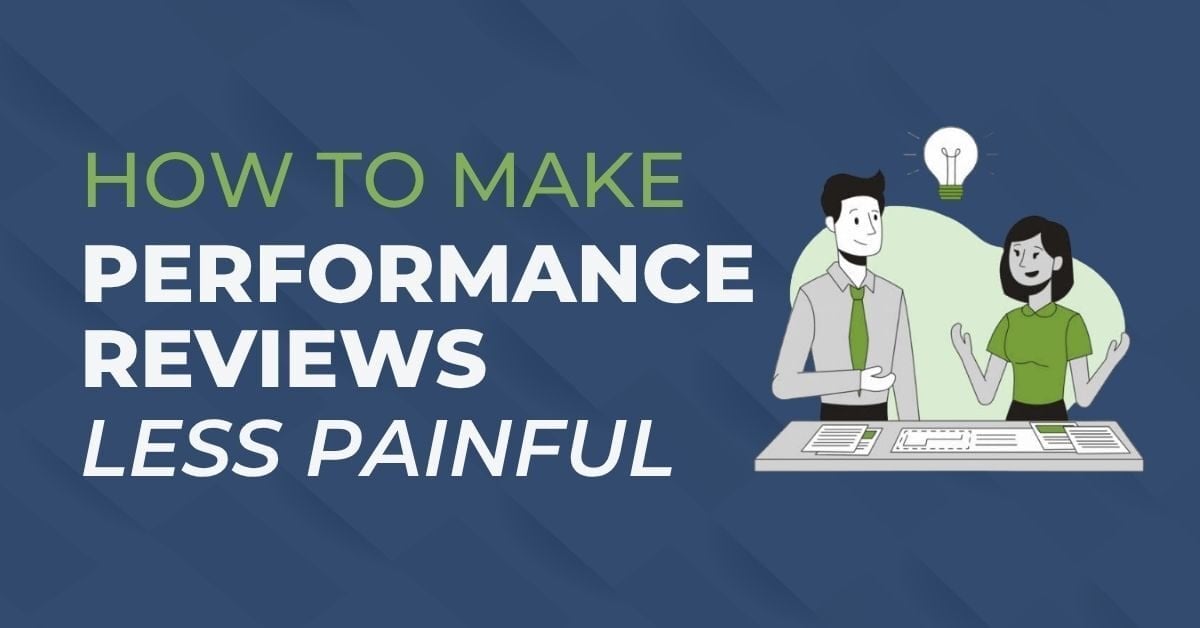
Performance review season has a reputation, and it’s not the fun, Taylor Swift kind.
It’s the time of year many small businesses dread: rushed meetings, uncomfortable conversations, or skipped reviews altogether.
But it doesn’t have to be that way. With the right approach, performance reviews can strengthen your team, improve communication, and help employees see a future with your company.
As someone who’s helped dozens of managers navigate review season (the good, the bad, and the avoidable), I know how overwhelming this can feel, especially without an HR team.
It doesn’t have to be painful. It just needs to be intentional. And I’m going to show you how.
In this article, I’ll walk you through a simpler, more human approach to reviews. One that builds trust, boosts retention, and doesn’t require fancy HR tools.
Why Traditional Performance Reviews Fall Flat
Most small businesses tell us their reviews feel awkward or unhelpful. They struggle because the traditional approach just doesn’t fit how people work today.
Here are some of the issues we see:
- They’re too infrequent. Once-a-year feedback means employees don’t have a chance to course-correct (or celebrate wins) along the way, and it often reflects only what’s fresh in the manager’s mind. Unless you’ve been documenting feedback throughout the year, the review becomes a snapshot of recent months instead of a true picture of the employee’s overall performance.
- They’re vague. “Keep up the good work” doesn’t give anyone direction or motivation.
- Managers dread them. Without the right training or confidence, reviews can feel more like confrontation than conversation.
- Employees get anxious. No one wants to feel like they’re being judged without context.
When reviews are seen as a “check-the-box” task, they miss the opportunity to build engagement and trust.
Why Performance Reviews Should Be Conversations, Not Evaluations
If your review is just about ratings, you’re missing the most important part: understanding what your employees need to grow.
Think of reviews as a two-way conversation, not a one-time evaluation. Instead of focusing only on what went wrong or right, use the discussion to learn what motivates your employees, what challenges they’ve faced, and what support they need from you.
A few great questions to ask:
- What’s gone well for you this year?
- What do you want to learn or take on next year?
- What can I do differently to help you succeed?
When you make feedback conversational and collaborative, employees walk away feeling valued and not judged.
How to Make Performance Reviews Ongoing, Not Just Once a Year
One of the biggest mistakes small businesses make is saving all their feedback for once a year.
Try building “mini-reviews” or “check-ins” throughout the year instead. Our team does this through monthly one-on-ones, but even a 15-minute conversation each quarter can make a big difference. It keeps feedback timely, builds trust, and eliminates the anxiety that often surrounds annual reviews.
If you’re using an HR system like isolved (what we use at Whirks), you can even document notes and goals along the way, making the annual conversation feel more natural and data-driven.
Whether you’re reviewing once a year or more often, here’s how to make each conversation count.
How to Run Better Employee Reviews, Even Without Fancy Tools
You don’t need a big HR department to do this well. Here’s a simple checklist for more effective, less stressful reviews:
- Be prepared. Review goals, accomplishments, and feedback ahead of time.
- Start positive. Acknowledge wins and contributions before diving into improvements.
- Be specific. Vague feedback doesn’t help anyone grow. Give clear examples.
- Listen as much as you talk. Ask open questions and let employees share their perspective.
- End with action. Identify one or two concrete next steps, not just “keep it up.”
How to Coach Managers to Give Better Performance Reviews
For many small business managers, giving feedback doesn’t come naturally, and that’s OK. Leaders can help by offering tools, templates, and even short training sessions to make these conversations easier.
Here’s an example of how you can shift language from critical to constructive:
- Instead of: “You’re not a team player.”
- Try: “I’ve noticed some challenges with collaboration lately. Talk to me about what’s getting in the way, so we make it smoother.”
That small change turns feedback from blame into problem-solving and improvement.
Turning Review Season into a Retention Tool
When done thoughtfully, performance reviews can be one of your strongest retention tools. Employees who feel heard, supported, and encouraged are far more likely to stay engaged and committed.
So, this year, instead of dreading review season, try reframing it. Focus less on forms and ratings, and more on relationships and results.
Don’t Just Review Performance, Grow People
At the end of the day, performance reviews don’t have to be a dreaded, once-a-year task.
With just a little structure and consistent check-ins, they can become one of your most powerful tools for building trust, improving culture, and retaining your best people.
If you’re not sure where to start, or you want a lightweight process your team will actually use, our HR team can help you create one that fits your business and your people. One your employees will appreciate.
Because the goal isn’t just to review performance. It’s to grow your people. And that’s what great teams do.
Topics:
